1. Lacey K, Pritchett E. Nutrition care process and model: ADA adopts road map to quality care and outcomes management. J Am Diet Assoc. 2003; 103:1061–1072. PMID:
12891159.
2. Oldewage-Theron WH, Egal A. Impact of nutrition education on nutrition knowledge of public school educators in South Africa: a pilot study. Health SA Gesondheid. 2012; 17:a602.
3. Celis-Morales C, Livingstone KM, Petermann-Rocha F, Navas-Carretero S, San-Cristobal R, O’Donovan CB, Moschonis G, Manios Y, Traczyk I, Drevon CA, et al. Frequent nutritional feedback, personalized advice, and behavioral changes: findings from the European Food4Me Internet-Based RCT. Am J Prev Med. 2019; 57:209–219. PMID:
31248745.
4. Doets EL, de Hoogh IM, Holthuysen N, Wopereis S, Verain MC, van den Puttelaar J, Hogenelst K, Boorsma A, Bouwman EP, Timmer M, et al. Beneficial effect of personalized lifestyle advice compared to generic advice on wellbeing among Dutch seniors - an explorative study. Physiol Behav. 2019; 210:112642. PMID:
31394106.
5. Fan Au VL, Kit Lo RS, Kwan Lo SW. A patient-centred care approach to nutrition and diet in palliative care. J Pain Symptom Manage. 2018; 56:e96.
6. Petrin C, Kahan S, Turner M, Gallagher C, Dietz WH. Current attitudes and practices of obesity counselling by health care providers. Obes Res Clin Pract. 2017; 11:352–359. PMID:
27569863.
7. Rutty J, Biggs M, Dowsett D, Kitchener A, Coltman N, Rutty G. Post mortem computed tomography: an innovative tool for teaching anatomy within pre-registration nursing curricula. Nurse Educ Today. 2019; 76:154–164. PMID:
30784844.
8. Wilson EK, Krieger KE, Koo HP, Minnis AM, Treiman K. Feasibility and acceptability of a computer-based tool to improve contraceptive counseling. Contraception. 2014; 90:72–78. PMID:
24815097.
9. Manning K, Senekal M, Harbron J. Non-communicable disease risk factors and treatment preference of obese patients in Cape Town. Afr J Prim Health Care Fam Med. 2016; 8:e1–12.
10. Graham AS, Hammond A, Williams AE. Foot health education for people with rheumatoid arthritis: the practitioner’s perspective. J Foot Ankle Res. 2012; 5:2. PMID:
22233879.
11. Jamil NA, Mohd-Said S, Hwa CS, Sameeha MJ, Kruger E. Needs assessment towards the development of an integrated diabetes-oral health nutrition education module: a qualitative study. Int J Integr Care. 2021; 21:10.
12. Bawadi H, Al-Jayyousi GF, Shabana H, Boutefnouchet S, Eljazzar S, Ismail S. Innovative nutrition education: a color-coded tool for individuals with low literacy level. Healthcare (Basel). 2022; 10:272. PMID:
35206887.
13. Van der Horst K, Bucher T, Duncanson K, Murawski B, Labbe D. Consumer understanding, perception and interpretation of serving size information on food labels: a scoping review. Nutrients. 2019; 11:2189. PMID:
31514395.
14. Naska A, Valanou E, Peppa E, Katsoulis M, Barbouni A, Trichopoulou A. Evaluation of a digital food photography atlas used as portion size measurement aid in dietary surveys in Greece. Public Health Nutr. 2016; 19:2369–2376. PMID:
26917048.
15. Nikolić M, Milešević J, Zeković M, Gurinović M, Glibetić M. The development and validation of a food atlas for portion size estimation in the Balkan Region. Front Nutr. 2018; 5:78. PMID:
30271776.
16. Abrahams M, Matusheski NV. Personalised nutrition technologies: a new paradigm for dietetic practice and training in a digital transformation era. J Hum Nutr Diet. 2020; 33:295–298. PMID:
32173947.
18. Alshenqeeti H. Interviewing as a data collection method: a critical review. Engl Linguist Res. 2014; 3:39–45.
19. Richey RC, Klein JD. Design and development research. Handbook of Research on Educational Communications and Technology. New York (NY): Springer;2014. p. 141–150.
20. Guest G, Namey E, Chen M. A simple method to assess and report thematic saturation in qualitative research. PLoS One. 2020; 15:e0232076. PMID:
32369511.
21. Che Abdul Rahim N, Ahmad MH, Siew Man C, Zainuddin AA, Rodzlan Hasani WS, Ganapathy SS, Ahmad NA. Factors influencing the levels of awareness of the Malaysian Healthy Plate Concept among rural adults in Malaysia. Int J Environ Res Public Health. 2022; 19:6257. PMID:
35627795.
22. Mayr HL, Kelly JT, Macdonald GA, Hickman IJ. ‘Focus on diet quality’: a qualitative study of clinicians’ perspectives of use of the Mediterranean dietary pattern for non-alcoholic fatty liver disease. Br J Nutr. 2022; 128:1220–1230. PMID:
33766176.
23. Chicca J, Chunta K. Engaging students with visual stories: using infographics in nursing education. Teach Learn Nurs. 2020; 15:32–36.
24. Gausman V, Quarta G, Lee MH, Chtourmine N, Ganotisi C, Nanton-Gonzalez F, Ng CL, Jun J, Perez L, Dominitz JA, et al. A theory-based educational pamphlet with low-residue diet improves colonoscopy attendance and bowel preparation quality. J Clin Gastroenterol. 2020; 54:164–169. PMID:
30439762.
25. Danielzik S, Pust S, Landsberg B, Müller MJ. First lessons from the Kiel Obesity Prevention Study (KOPS). Int J Obes. 2005; 29(Suppl 2):S78–S83.
26. Turconi G, Guarcello M, Berzolari FG, Carolei A, Bazzano R, Roggi C. An evaluation of a colour food photography atlas as a tool for quantifying food portion size in epidemiological dietary surveys. Eur J Clin Nutr. 2005; 59:923–931. PMID:
15928683.
27. Gavrieli A, Naska A, Berry R, Roe M, Harvey L, Finglas P, Glibetic M, Gurinovic M, Trichopoulou A. Dietary monitoring tools for risk assessment. EFSA Support Publ. 2014; 11:EN-607.
28. Al Marzooqi HM, Burke SJ, Al Ghazali MR, Duffy E, Yousuf MH. Al the development of a food atlas of portion sizes for the United Arab Emirates. J Food Compos Anal. 2015; 43:140–148.
29. Vasiloglou MF, Christodoulidis S, Reber E, Stathopoulou T, Lu Y, Stanga Z, Mougiakakou S. Perspectives and preferences of adult smartphone users regarding nutrition and diet apps: web-based survey study. JMIR Mhealth Uhealth. 2021; 9:e27885. PMID:
34328425.
30. Ventola CL. Mobile devices and apps for health care professionals: uses and benefits. P&T. 2014; 39:356–364. PMID:
24883008.
31. König LM, Attig C, Franke T, Renner B. Barriers to and facilitators for using nutrition apps: systematic review and conceptual framework. JMIR Mhealth Uhealth. 2021; 9:e20037. PMID:
34254938.
32. Akdur G, Aydin MN, Akdur G. Adoption of mobile health apps in dietetic practice: a case study of diyetkolik. JMIR Mhealth Uhealth. 2020; 8:e16911. PMID:
33006566.
33. Akhu-Zaheya LM, Shiyab WY. The effect of short message system (SMS) reminder on adherence to a healthy diet, medication, and cessation of smoking among adult patients with cardiovascular diseases. Int J Med Inform. 2017; 98:65–75. PMID:
28034414.
34. Choi BG, Dhawan T, Metzger K, Marshall L, Akbar A, Jain T, Young HA, Katz RJ. Image-based mobile system for dietary management in an American Cardiology Population: pilot randomized controlled trial to assess the efficacy of dietary coaching delivered via a smartphone app versus traditional counseling. JMIR Mhealth Uhealth. 2019; 7:e10755. PMID:
31012860.
35. Hansel B, Giral P, Gambotti L, Lafourcade A, Peres G, Filipecki C, Kadouch D, Hartemann A, Oppert JM, Bruckert E, et al. A fully automated web-based program improves lifestyle habits and HbA1c in patients with type 2 diabetes and abdominal obesity: a randomized trial of patient e-coaching nutritional support (the ANODE study). J Med Internet Res. 2017; 19:e360. PMID:
29117929.
36. Lim S, Kang SM, Kim KM, Moon JH, Choi SH, Hwang H, Jung HS, Park KS, Ryu JO, Jang HC. Multifactorial intervention in diabetes care using real-time monitoring and tailored feedback in type 2 diabetes. Acta Diabetol. 2016; 53:189–198. PMID:
25936739.
37. Alonso-Domínguez R, García-Ortiz L, Patino-Alonso MC, Sánchez-Aguadero N, Gómez-Marcos MA, Recio-Rodríguez JI. Effectiveness of a multifactorial intervention in increasing adherence to the mediterranean diet among patients with diabetes mellitus type 2: a controlled and randomized study (EMID study). Nutrients. 2019; 11:162. PMID:
30646500.
38. Green BB, Anderson ML, Cook AJ, Catz S, Fishman PA, Mcclure JB, Reid R. e-Care for heart wellness: a feasibility trial to decrease blood pressure and cardiovascular risk. Am J Prev Med. 2014; 46:368–377. PMID:
24650839.
39. Kelly JT, Conley M, Hoffmann T, Craig JC, Tong A, Reidlinger DP, Reeves MM, Howard K, Krishnasamy R, Kurtkoti J, et al. A coaching program to improve dietary intake of patients with Ckd Entice-Ckd. Clin J Am Soc Nephrol. 2020; 15:330–340. PMID:
32111701.
40. Esa NM, Mailok R, Yatim MH. Keberkesanan permainan persuasif grafik terhadap perubahan sikap pemilihan makanan sihat dalam kalangan murid-murid tahun dua. Sains Humanika. 2017; 9:1–8.
41. Vanoh D, Shahar S, Razali R, Ali NM, Manaf ZA, Mohd Noah SA, Nur AM. The effectiveness of a web-based health education tool, WESIHAT 2.0, among older adults: a randomized controlled trial. J Alzheimers Dis. 2019; 70:S255–S270. PMID:
31256116.
42. Migneault JP, Dedier JJ, Wright JA, Heeren T, Campbell MK, Morisky DE, Rudd P, Friedman RH. A culturally adapted telecommunication system to improve physical activity, diet quality, and medication adherence among hypertensive African-Americans: a randomized controlled trial. Ann Behav Med. 2012; 43:62–73. PMID:
22246660.
43. Nadarzynski T, Miles O, Cowie A, Ridge D. Acceptability of artificial intelligence (AI)-led chatbot services in healthcare: a mixed-methods study. Digit Health. 2019; 5:2055207619871808. PMID:
31467682.
44. Murphy WJ, Yadrick MM, Steiber AL, Mohan V, Papoutsakis C. Academy of Nutrition and Dietetics Health Informatics Infrastructure (ANDHII): a pilot study on the documentation of the nutrition care process and the usability of ANDHII by registered dietitian nutritionists. J Acad Nutr Diet. 2018; 118:1966–1974. PMID:
29804870.
45. Ahn JS, Kim DW, Kim J, Park H, Lee JE. Development of a smartphone application for dietary self-monitoring. Front Nutr. 2019; 6:149. PMID:
31608283.
46. Gabrielli S, Dianti M, Maimone R, Betta M, Filippi L, Ghezzi M, Forti S. Design of a mobile app for nutrition education (Trec-Lifestyle) and formative evaluation with families of overweight children. JMIR Mhealth Uhealth. 2017; 5:e48. PMID:
28408361.
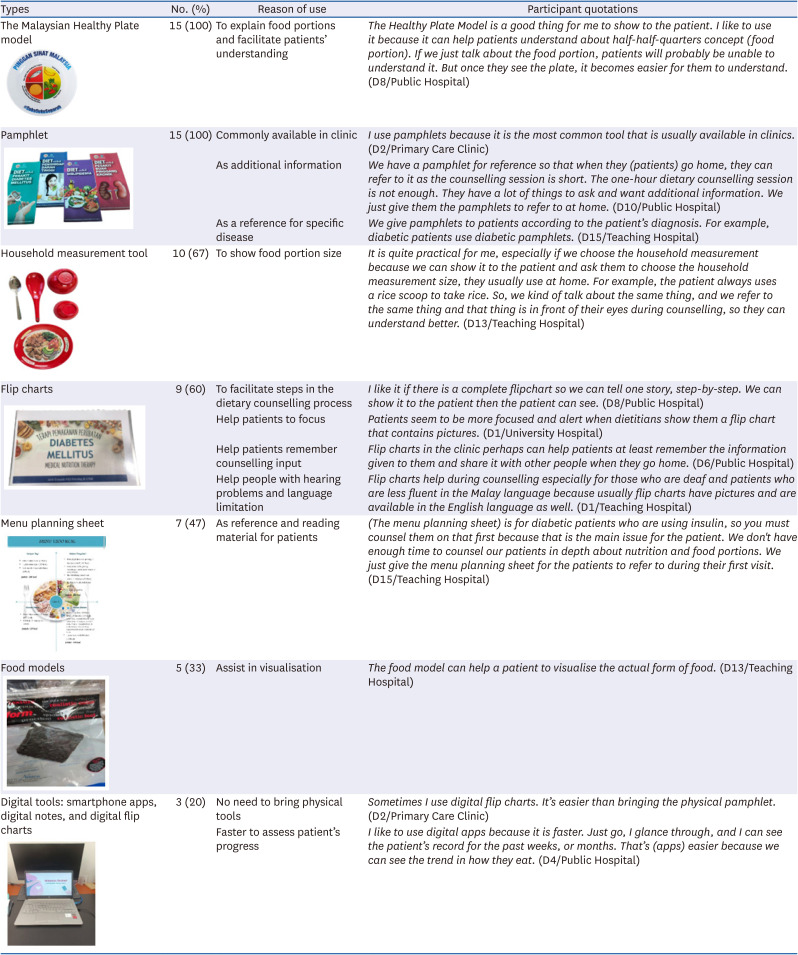

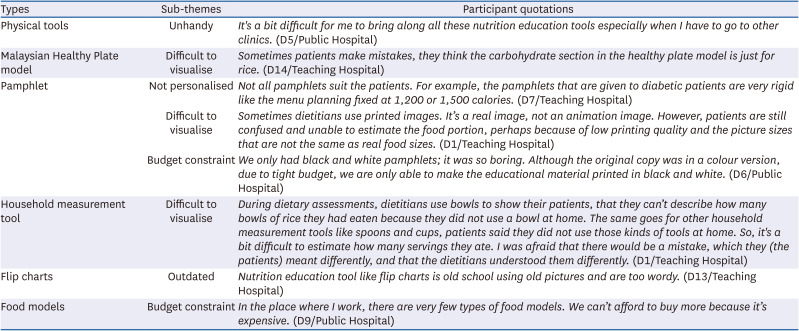
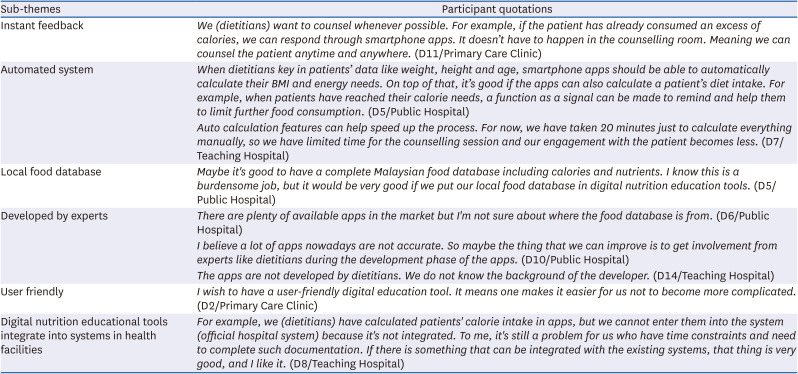
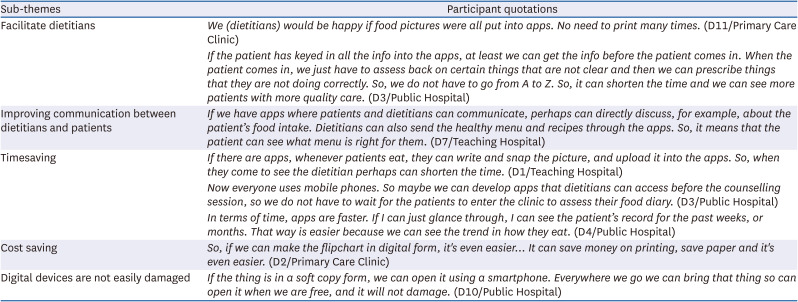




 PDF
PDF Citation
Citation Print
Print




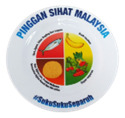
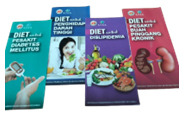
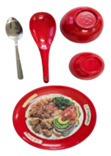
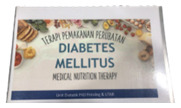
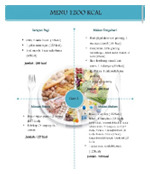
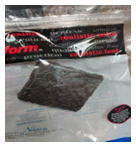
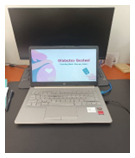
 XML Download
XML Download